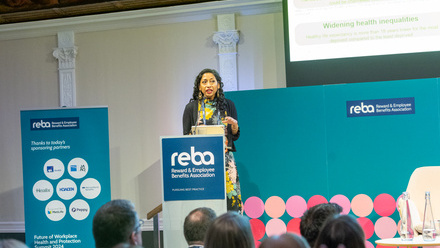What will employee benefits technology look like in five years time?

Spending on benefits technology tends to focus on three areas (according to Sourcemedia Research): enrollment technology (51%), benefits administration systems (47%) and employee benefits portals (37%). So how will that change over the next 5 years as employee benefits technology becomes more sophisticated and accessible?
1) A better connected workforce
Better and more affordable software will mean that it will be easier than ever before for employers to stay in contact with staff working remotely or globally, as well as allowing them access to employee benefits whenever and wherever they want.
Perhaps the biggest change will be the number of employers offering flexible and remote working as a benefit, particularly with multi-device and cloud computing developments in mind. Once the domain of software developers and freelancers, we would expect to see the likes of financial and professional services firms dramatically growing their remote workforce - a trend that is already starting to happen.
Large, central, headquartered offices may well shrink in the process and the daily commute could become a thing of the past.Whilst this may appeal to employees, employers will face the challenge of making sure everyone feels part of the team.
2) Increasingly personalised benefits portfolios
User experience is a key concern for benefits providers and employers alike. Organisations need to make sure that any new platform that is implemented is quick, easy and intuitive to use and this in turn will increase engagement. That's particularly true for millenials who have grown up as digital natives and expect a certain level of user experience.
We would certainly expect to see more and more employers adopting technology such as web-based enrolment portals and mobile apps over the next five years but, perhaps more interesting will be the increased focus on personalised / private benefit exchanges. It will become easier than ever for employers to utilise support tools such as cost calculators and recommendation engines as well as helping employees select benefits and build and manage much more personalised benefit portfolios.
3) Wellness technology
Many of the consumer technologies that have been made in the "wellness" arena are now making their way into the workplace and this trend will only continue to gather pace.
According to Sourcemedia Research data, wellness tech is already a major focus for many employers. One in four respondents of their 2016 survey said they would spend money on wellness tracking and analytics, while 15% said they would spend on wellness apps and 13% on wearable devices. This includes things such as tech-enabled lifestyle coaching, wearable technology and apps for tracking and analysing exercise activity or nutritional intake.
But how could this develop as technology improves? Things get exciting when you consider the extent to which employers could use personal data to help prevent illness, facilitate early treatment and support rehabilitation by working with providers of healthcare benefits and utilising things such as claims data. Of course, data protection and privacy will be a major consideration here, but the fact is that the technology exists and this development is certainly possible in the next five years.
Conclusion
Technology has revolutionised the way in which employees interact with their employers and workplaces and the tools that employers have access to will only become more affordable and sophisticated. Though much of the what we've discussed in this article already exists in some shape or form, the major difference we'll see in five years time will be that more and more employers begin to take advantage of these new technologies and, in doing so, implement major changes to their employee engagement strategies.
This article was provided by Xexec.
In partnership with Xexec
Xexec is the UK's leading Reward and Recognition and Employee Benefits provider.







